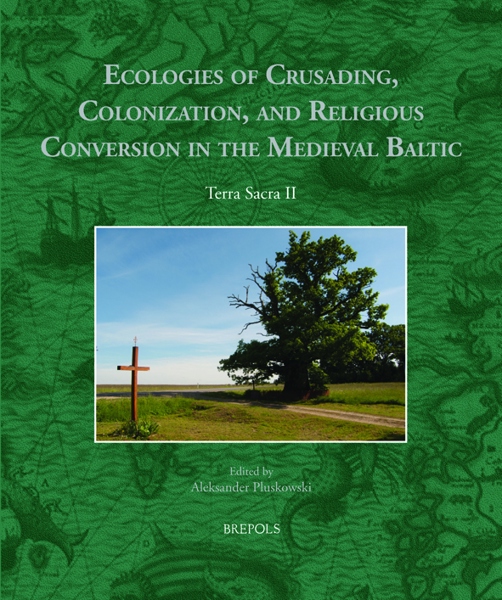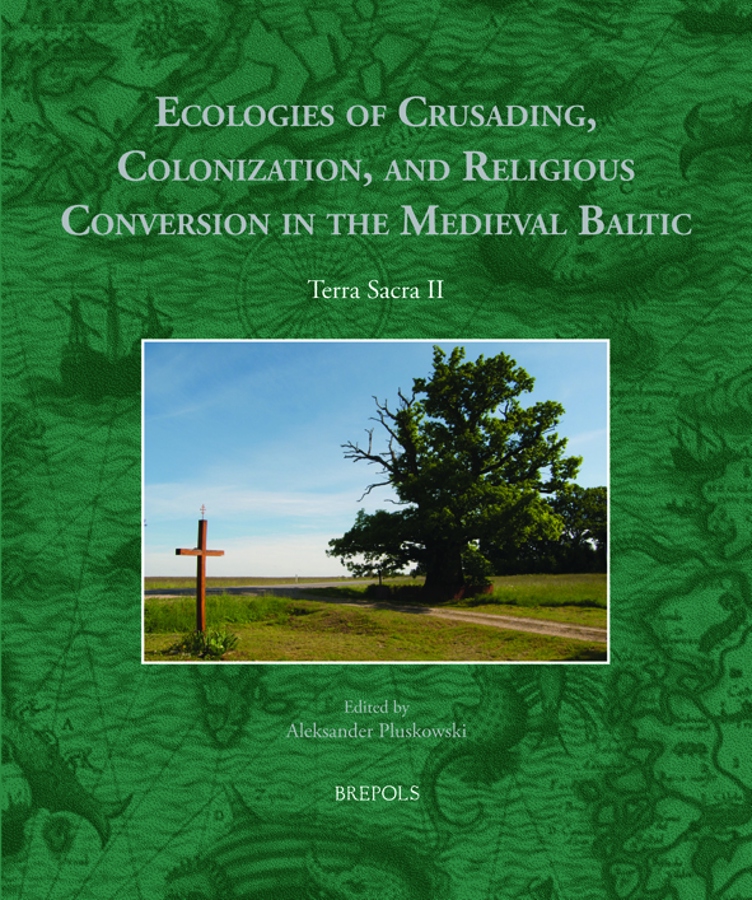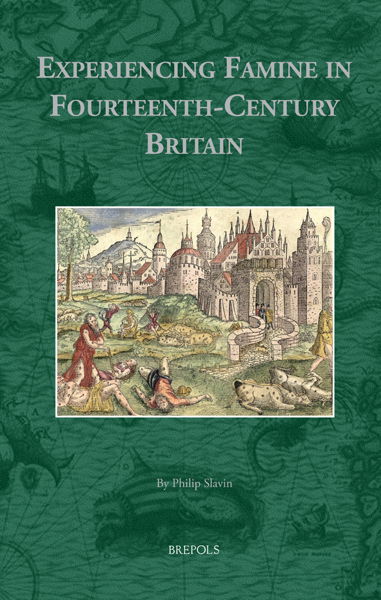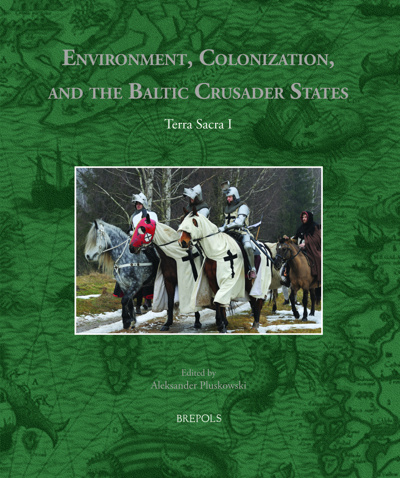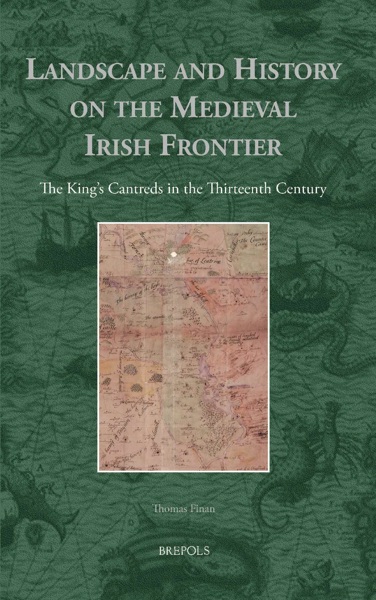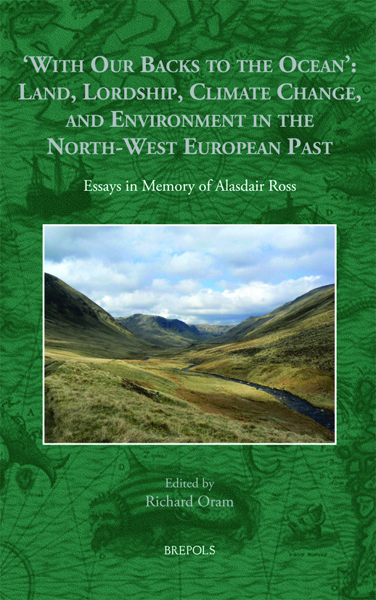
Ecologies of Crusading, Colonization, and Religious Conversion in the Medieval Baltic
Terra Sacra II
Aleksander Pluskowski (ed)
- Pages: xx + 246 p.
- Size:216 x 280 mm
- Illustrations:73 b/w, 9 col., 22 tables b/w., 20 maps b/w
- Language(s):English
- Publication Year:2019
- € 110,00 EXCL. VAT RETAIL PRICE
- ISBN: 978-2-503-55133-3
- Paperback
- Available
“This is an important step beyond traditional archeology (…) this is an attractive publication that poses interesting questions for future research as well as summarizing recent results in environmental studies. It will have significant value for scholars writing political and social history and serve as a model for similar studies elsewhere.” (William L. Urban, in The Medieval Review, 09/05/2020)
“These books certainly represent a bold future for studying the physicality of medieval eastern Europe, (…) these volumes set a standard which, at least in some fields, many will be striving for.” (Roderick McDonald, in Parergon, 37/2, 2020, p. 241)
“The seventeen chapters contain fascinating materials in their own right and form a coherent whole with the help of Pluskowski’s introduction (…) This work will be read with interest by archaeologists and historians working across diverse disciplines and periods and hopefully encourage more medievalists to integrate high and late medieval north-eastern Europe into their research and teaching activities.” (Mark Whelan, in Nottingham Medieval Studies, 66, 2022, p. 224)
In the thirteenth century, crusading armies unleashed a relentless holy war against the pagan tribal groups of the Eastern Baltic, whose territories were conquered and reorganized into Christian states run by the Teutonic Order, bishops, and their cathedral chapters. Castles were built, towns established, and colonists encouraged to settle under the leadership of the new Christian theocracy. But the changes introduced alongside Christianity not only transformed the culture of eastern Baltic societies, but also had a profound and — for the Baltic tribes, who saw many aspects of the natural world as sacred — deeply significant impact on the local environment. This seminal period in the environmental history of north-eastern Europe has been the focus of the ERC-funded research programme, ‘The Ecology of Crusading’, which explored the physical and conceptual ecological transformations associated with warfare, colonization, and religious conversion.
This second Terra Sacra volume draws together a series of case-studies on Livonia and Prussia that provide a unique snapshot of recent research into environmental change during the Baltic Crusades and also explore long-term trends in landscape organization and environmental exploitation. The volume covers six key themes: building-construction in the conquered territories; food supply to the houses of the Teutonic Order; life in the multi-cultural towns of the eastern Baltic; transforming the physical landscape; transforming the spiritual landscape; and the Baltic Ordensland in its regional context. It forms a companion to Environment, Colonization, and the Baltic Crusader States: Terra Sacra I.
Preface
Acknowledgements
Glossary
List of Illustrations
Introduction: Multi-Scalar Impacts of Crusading on the Environments of the Eastern Baltic —ALEKSANDER PLUSKOWSKI
The Environmental Setting of the Earliest Teutonic Order Stronghold in Elbląg — JOANNA FONFEREK
Timber and its Use from the Late Iron Age to the End of the Medieval Period in Latvia — MĀRIS ZUNDE
Resources for Castle Building in Medieval Prussia and Livonia — K. M. J. HAYWARD with a contribution by STUART BLACK
Animal Exploitation in Karksi and Viljandi (Estonia) in the Late Iron Age and Medieval Period — EVE RANNAMÄE AND LEMBI LÕUGAS
Written Evidence Concerning the Resources of the Teutonic Order in Livonia: The Cases of Karkus and Fellin — JUHAN KREEM
Carbon and Nitrogen Stable Isotope Evidence for Animal Husbandry and Environmental Change in the Medieval Kulmerland — CHARLOTTE SCULL, GUNDULA MÜLDNER, AND DANIEL MAKOWIECKI
The Plant Element in the Diet of the Inhabitants of Danzig (Gdańsk), Elbing (Elbląg), and Marienburg (Malbork) During the Rule of the Teutonic Order: Historical and Archaeobotanical Perspectives — MONIKA BADURA AND BEATA MOŻEJKO
A Foul Perspective: Analysis of Invertebrate Remains in a mid-Fourteenth-Century Latrine from Riga, Latvia — GARY A. KING
Parasites and Baltic Crusading in Medieval Riga: Insights into Disease, Diet, and Hygiene — HUI-YUAN YEH AND PIERS D. MITCHELL
Evidence of Human Impact and Vegetation Change during the Late Iron Age and the Medieval Livonian Period at Some Sites along the Lower Course of the River Daugava — LAIMDOTA KALNIŅA, AIJA CERIŅA, KRISTAPS KIZIKS, KARINA STANKEVIČA, AGNESE PUJĀTE, AND ANDA DRUČKA
Palaeoecological Evidence of Crusades and Subsequent Impact on the Livonian Landscape — NORMUNDS STIVRIŅŠ, SIIM VESKI, AND TRIIN REITALU
Sacred Landscapes of Medieval Livonia: Lands of the Teutonic Order in Southern Estonia — HEIKI VALK
Surkapurn and Kreken: The Phenomena of Name and Place and the Organization of Sacred Space in Prussia Using Archaeology and Other Sources — SEWERYN SZCZEPAŃSKI
Continuity and Discontinuity in the Sacral Landscape of Lithuania — VYKINTAS VAITKEVIČIUS
Reorganizing the Livonian Landscape: Some Issues and Research Perspectives — KASPARS KĻAVIŅŠ
Exploiting Animals in the Medieval North-Western Russian Frontier – MARK MALTBY
The Teutonic Order’s Role in the Development of a Medieval Eastern Baltic Cod Fishery: Evidence from Fish Bone Isotopes — DAVID ORTON, EVE RANNAMÄE, LEMBI LÕUGAS, DANIEL MAKOWIECKI, SHEILA HAMILTON-DYER, ALEKSANDER PLUSKOWSKI, TAMSIN O’CONNELL, AND JAMES BARRETT
